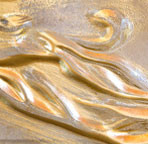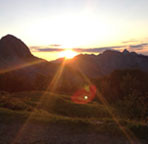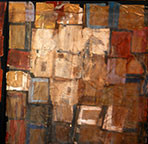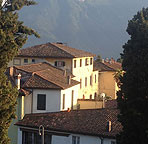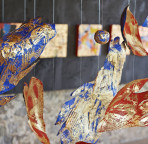To be absorbed in the sheer otherness of any created order or beauty is to open the door to God, because it involves that basic displacement of the dominating ego without which there can be no spiritual growth.
— Rowan Williams, The Wound of Knowledge; quoted in Daniel Siedell’s, Who’s Afraid of Modern Art?
Sharing his experience in the contemporary art world, curator and art critic Daniel Siedell, continues: “A painting is that kind of open door for me. Every conversation I have with an artist, Christian or (usually) not, is a theological conversation.”
Siedell is not about pasting theology onto unassuming works of art. His engagement with art respects the agency of those works to speak for themselves, to deliver messages which illicit interpretation and response. Our consideration of such messages engages what we ourselves hold to be true and how we interpret our own experience. What we know of ourselves, as people of faith, cannot be separated from what we believe about God. Speaking of the power of art to engage, Siedell observes, “I know artists who profess atheism with their lips, yet make paintings that confess otherwise.”
He continues: “The tradition of modern art, beginning with Gustave Courbet in the nineteenth century and extending into the present, establishes the artist’s studio as a legitimate place for a human being to paint their way into their identity—through their faith, disbelief, hopes, and fears. In the studio they stand before themselves, the world, and God. Unhinged from the necessity of understanding their work as the fulfillment of commissions, they were free (or, as Sartre observes, condemned) to define the trajectory of their own work, through their own felt experience—to create their own significance, to invent their own roles as artists and the function of their artifacts as a means to give meaning to their lives. Free to do anything in the artist’s studio, the modern artist has a responsibility to do something. The modern tradition in art is thus the accumulation of these remarkable somethings, disclosing the human condition in particularly powerful and distinctive ways, as art becomes a means for self-discovery. Edvard Munch encapsulated this approach to the studio when he said, “in my art I attempt to explain life and its meaning to myself,” an attempt to paint the “soul’s diary.” Yet “self-discovery” and the creation of meaning is not a private affair, but always consists of the artist’s relationship to the world and to God—even if “God” is only an echo, a ghost that haunts his consciousness.”
Whether we are the creators or the observers, our choice to engage the work constitutes the opening of the door. Comments welcome.

